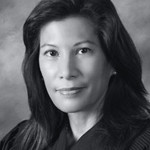Who gets court-funded interpreters and how many are available are among issues being raised by a series of “working group” meetings focused on the pending state budget court-funding debate. While many judges say they may have enough to deal with Spanish-speaking cases, they note that more than 200 languages are spoken in California, according to a report by public radio station KPCC.
Another issue is which kinds of cases even get court-funded interpreters, notes the station, noting that “… while counties provide them for criminal cases, they generally don’t for things like child custody hearings and divorce proceedings. “We provide an interpreter for someone who ran a red light, but not someone who’s losing their children,” said one source.
The working group has already met in San Francisco. Next month, they’ll hold their final hearing in Sacramento before submitting the first draft of a language access improvement plan in June, reports Rina Palta, the station’s crime and safety reporter. Read and listen to the report here.
Follow the reporter on Twitter: @KPCCRina911

